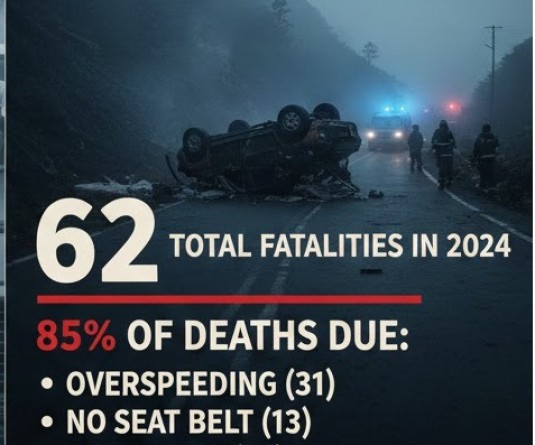A view of Zunheboto Government College. (Morung Photo)

Tokavi K Zhimo
Zunheboto | March 5
Zunheboto Government College (ZGC), the sole secular college Zunheboto district, has been without a principal for the past ten months, raising concern from the college community.
The last principal, Dr K Kalito Chishi, served until May 31, 2024, before retiring.
The prolonged vacancy has sparked concern among students and confusion among faculty and support staff, who are questioning why higher authorities are taking so long to appoint a new principal, particularly in a district that has only one such college.
According to a reliable source, higher authorities are in the “process of appointing” a new principal, but the process has been significantly delayed.
The college has not received any updates on the appointment, and it has been over six to seven months since the last communication, the source added.
ZGC, with the motto "Struggle and Progress," was established as Zunheboto College, a private institution, on July 21, 1980, and was initially sponsored and managed by the Sumi Hoho. It was formally taken over by the Government of Nagaland on September 16, 1985, and inaugurated as a government college in November 1985.
The college is now permanently affiliated with Nagaland University and recognized under Sections 2(f) and 12(B) of the UGC Act, 1956. During its first cycle of assessment by the National Assessment and Accreditation Council (NAAC) under the University Grants Commission (UGC), ZGC received a ‘B’ grade accreditation.
According to the Annual Administrative Report 2024-25 from the Department of Higher Education, ZGC has an enrollment of 506 students for the 2024-25 academic session. The college currently has 31 teaching faculty members and 30 to 35 support staff.
ZGC operates three buses, one with a seating capacity of 42 and two with a seating capacity of 24. However, the buses are in poor condition, and maintenance and repairs are an ongoing challenge, according to a staff member.
Although a mini-bus with a seating capacity of 18 was recently provided by the Higher Education Department, transportation remains inadequate to meet the needs of students, given the college’s location a bit further from town.





.jpg)
